WMG News
Consortium established to tackle decarbonisation of cross-Channel ferry fleet
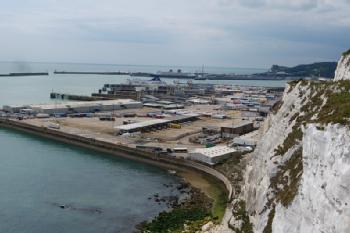 WMG at the University of Warwick is playing a key part in a new research project supporting the UKs pledge to achieve net-zero by 2050.
WMG at the University of Warwick is playing a key part in a new research project supporting the UKs pledge to achieve net-zero by 2050.
The seven-month project, entitled the Dover Clean Ferry Power, is a collaboration between the Port of Dover, P&O Ferries, WMG and Schneider Electric, led by Kent Business School at the University of Kent.
The project, which is part of a £20 million programme funded by the Department for Transport, will investigating the decarbonisation of the cross-Channel ferry fleet and in turn support the delivery of the Port of Dover Air Quality Action Plan.
Currently, Port of Dover vessels spend energy through in-harbour activity, open sailing and on-vessel services (such as heating, lighting and hospitality). Some vessels are hybrid; self-charging on-board batteries whilst in open sailing and then using the battery charge whilst in-harbour.
This project will model ferry operations at Dover to establish energy requirements, CO2 effects, air quality and running costs, using this to evaluate technical solutions for both ferries and the port, to accelerate the move to net zero. Insights gained may then have the potential to extend to cruise and cargo operators, as well as adaptation of experienced vessels.
Researchers and engineers at WMG High Value Manufacturing Catapult Centre will be undertaking all of the battery modelling and analytics, plus energy and CO2 modelling for the port of Dover and for vessels using the port– which will impact the locals as well as the environment more widely.
Phil Whiffin, WMG Head of Energy Applications Group, explains: “This project builds on our existing zero emission transport expertise and allows us to apply the MIMO (Multi-Input Multi-Output) modelling technique developed by Dr Andrew McGordon to investigate the complex operations of a port. It will support investment and operation decisions for Dover and the ferry operators and ensure the optimum strategy is in place to move towards net-zero. Dover is an essential trade gateway for the UK so this is a project of great strategic importance and we are pleased to be part of this great consortium.”
Simon Barnes, Project Manager and Funding & Partnership Development Manager within the University of Kent’s Research & Innovation Operations, said: ‘For the University of Kent, this new project builds on a previous successful work with the Port of Dover and is an excellent example of a collaborative project with the University, industry partners and consumers.
‘It is our unified aim to investigate potential avenues that can lead to reductions in carbon emissions as part of the national priority of net-zero. The University of Kent is dedicated to the endeavour through a series of initiatives, with the Dover Clean Ferry Power project as a prime example of the role we play regionally and in applying intensive research to vital national goals.’
ENDS
Notes to Editors
(1)
Clean Maritime Demonstration Competition
The Dover Clean Ferry Power Project is part of the Clean Maritime Demonstration Competition, funded by the Department for Transport and delivered in partnership with Innovate UK.
Announced in March 2020, and part of the Prime Minister’s Ten Point Plan to position the UK at the forefront of green shipbuilding and maritime technology, the Clean Maritime Demonstration Competition is a £20m investment from government alongside a further c.£10mfrom industry to reduce emissions from the maritime sector. The programme is supporting 55 projects across the UK, including projects in Scotland, Northern Ireland and from the South West to the North East of England. As set out in the Clean Maritime Plan (2019), Government funding has been used to support early-stage research relating to clean maritime. The programme will be used to support the research, design and development of zero emission technology and infrastructure solutions for maritime and to accelerate decarbonisation in the sector.
Student success at international marine engineering competition
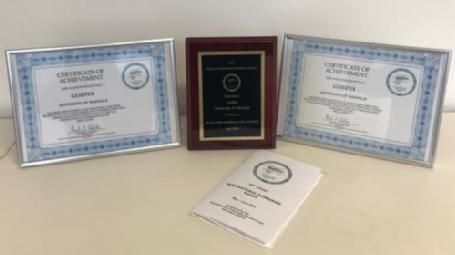 Congratulations to the Warwick Human Powered Submarine Team who received two awards and an overall commendation at the International Submarine Races (ISR16).
Congratulations to the Warwick Human Powered Submarine Team who received two awards and an overall commendation at the International Submarine Races (ISR16).
The competition is usually held every-other-year at the US Naval Base in Cardarock, Maryland in the US, but due to the Covid19 pandemic it was held virtually this year.
The Team was made up of seven final year engineering students, from the University of Warwick, including Gavin Ho; Phil Leiser; Jack Moore; James Grant; Alex Oortman; Karishma Patel and Vivek Suresh-Babu. The students had access to the engineering research and facilities within WMG’s engineering hall, and were supervised by WMG’s Professor Ian Tuersley and Senior Teaching Fellow Nigel Denton.
The Team competed against students from Universities across the globe and were delighted to receive ‘Honourable Mentions’ in the ‘Manoeuvring and Control Subsystem Design Challenge’ and the ‘Thrust Production Subsystem Design Challenge’ categories.
Professor Ian Tuersley said: “This is another great result from the Godiva Submarine student team. Once again they have brought back awards from the ISR, in competition against considerably more experienced international institutions. This consolidates the Warwick team as the UK champions in this hotly contended, high-profile event.”
Charlie Behrle, President of the competition organisers, the ‘Foundation for Underwater Research and Education’ (FURE) said: “With over 250 contestants representing 12 teams from three different countries participating, it was a busy and challenging event. Your team’s participation and performance were outstanding. We very much appreciate the effort your team put forth to participate in this event. Well done to Team Godiva!”
The Godiva Submarine is currently displayed, along with other University of Warwick student projects, at the Coventry Transport Museum as part of the ‘Our Future Moves’ exhibition.
Our Future Moves runs until 31st October 2021 - find out more here: Our Future Moves - Coventry Transport Museum (transport-museum.com)
Warwick Boring team unveil tunnelling machine at Elon Musk competition in Las Vegas
· The Warwick Boring Team is a student-led project designing, creating and building a tunnelling machine, which they are currently racing at Elon Musk’s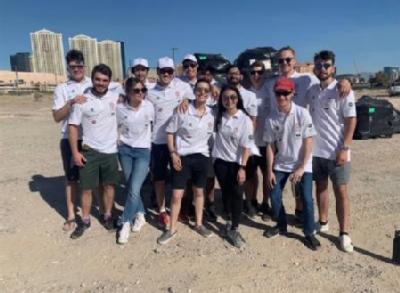 tunnelling competition organised by the boring company
tunnelling competition organised by the boring company
· Whilst at the competition in Las Vegas, the team are able to unveil their innovative machine
· The team head home on the 12th September, and hope to bring home an award with them
A team of students called The Warwick Boring Team are in Las Vegas, Nevada to competing in Elon Musk’s the Boring Company’s tunnelling competition, where they are showcasing their innovative machine for the first time.
A group of 27 students, known as the Warwick Boring Team are in Nevada, USA, competing in Elon Musk’s the Boring Company Tunnelling competition.
Current tunnelling machines are 14x slower than a snail, and cost from $100million to $1billion per mile, therefore the race to make a faster and cheaper machine is heating up.
Having been shortlisted as one of 12 teams out of nearly 400, the Warwick Boring Team aim to make our transport greener, cheaper and faster in future with their novel tunnelling machine, which will be competing against other top Universities including MIT, TUM and ETH Zurich, and industry tunnelling professionals.
With support from the School of Engineering, WMG, numerous other sponsors in the industry and the University of Warwick the students have made a machine that once scaled up the design is expected to be 80% faster than standard machines that typically dig one mile in 8-12 weeks. Moreover, the aim is to dig at a cost that is 10X cheaper than traditional machines that typically would cost $100m - $1bn per mile to construct tunnels we use today.
Sanzhar Taizhan, Founder and Co-Project Lead at Warwick Boring comments:
“After almost a year of creating, designing and building we are thrilled to see the machine here in the flesh and finished and finally in Vegas competing. The entire team have worked flat out for the last few months to get it together once we were allowed in the labs after the COVID-19 restrictions eased.
“We are so excited to see our machine working and see how it compares to other competitors. I am so proud of the team to making it to this stage no matter what the outcome is once we are out there.”
Tanner Hatzmann, the technical director at Warwick Boring adds:
“It would typically take years to create, design and build a novel machine, however we have been able to do it over the last year, even during lockdowns. The Warwick Boring tunnelling machine is exciting as it has – unique features here –. We cannot wait to see it in action and have everything crossed for a win.”
ENDS
10 SEPTEMBER 2021
NOTES TO EDITORS
High-res images available at:
https://warwick.ac.uk/services/communications/medialibrary/images/july_2021/image_3-_warwick_boring.jpeg
Caption: The Warwick Boring team in Las Vegas, Nevada, USA with their tunnelling machine
Credit: University of Warwick
https://warwick.ac.uk/services/communications/medialibrary/images/july_2021/image_4-_warwick_boring.jpeg
Caption: The Warwick Boring team in Las Vegas, Nevada, USA
Credit: University of Warwick
https://warwick.ac.uk/services/communications/medialibrary/images/july_2021/image_2-_warwick_boring.jpeg
Caption: The Warwick Boring team in Las Vegas, Nevada, USA
Credit: University of Warwick
For further information please contact:
Alice Scott
Media Relations Manager – Science
University of Warwick
Tel: +44 (0) 7920 531 221
E-mail: alice.j.scott@warwick.ac.uk
WMG Professor’s Digital Health journal achieves first ‘Impact Factor’
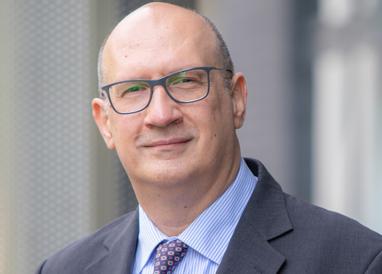 Digital Health Journal, co-founded by WMG Professor Theo Arvanitis and Professor John Powell from the University of Oxford in 2015, has been hailed as a great success after achieving its first Impact Factor.
Digital Health Journal, co-founded by WMG Professor Theo Arvanitis and Professor John Powell from the University of Oxford in 2015, has been hailed as a great success after achieving its first Impact Factor.
Impact Factors are used as an indication of the success of a journal within their domain. Digital Heath has achieved an impressive first Impact Factor of 3.495, placing the publication in both Q1 and Q2 across subjects in Science Citation Index Expanded (SCIE) and Social Sciences Citation Index (SSCI).
The journal focuses on healthcare in the digital world, bridging the evolution of advances in informatics and technology in medicine, health and all aspects of health care. The editors have built up a worldwide network of collaborators, which now has at its core a transatlantic editorial team and extends to reviewers from across the globe.
Professor of Digital Health Innovation at WMG, Professor Theo Arvanitis, explains: The future of digital health is exciting and important, as digital health technology can be the catalyst for changing the way we deliver health and care provision. In particular, in the ever-growing digital capability of our society, digital health technologies can effectively support disease management through the power of data and information.”
The editorial team consisting of Professor Arvanitis, Thierry Moulin, Jennifer Dobson and, John Hixson, in their recent editorial at the journal, added: “We aim to move forward as a journal by continuing to publish high-quality articles by a diverse range of authors from around the world, and we particularly welcome submissions from authors in developing countries. We hope to be at the forefront of discoveries in digital health, encouraging researchers to innovate and ensure the openness and scientific integrity of their research.
“We also wish to collaborate with academic societies in our field to increase the open access and visibility of the journal’s reported scientific outputs and, hence, improve communication within the broader field of digital health.”
“We would like to thank our team of peer reviewers and associate editors for their investment in the success of the journal: Their work has been, and will continue to be, integral to our growth.”
Find out more about WMG’s Digital Health Care research and education provision here: WMG :: Institute of Digital Healthcare (IDH) (warwick.ac.uk)
China welcomes world’s largest scenario database for autonomous vehicle safety
- Safety Pool™, led by WMG at the University of Warwick and Deepen AI, launches major collaboration with Automotive Data of China (CATARC-ADC), a subsidiary of CATARC Co., Ltd, bringing world’s largest public database for testing autonomous vehicle safety to China
- The database provides diverse sets of road safety scenarios, so that autonomous vehicles can be rigorously tested on virtual simulations of real public routes – this will now include Chinese use cases
- Over 200 organisations worldwide have already enrolled in Safety Pool™; greater collaboration advances the autonomous vehicle industry and further enhances road safety globally
The Safety PoolTM Scenario Database, the largest public repository of scenarios for testing autonomous vehicles in the world — led by WMG at the University of Warwick and Deepen AI — will now be used in China, thanks to a new partnership with Automotive Data of China, a subsidiary of the China Automotive Technology and Research Center (CATARC-ADC).
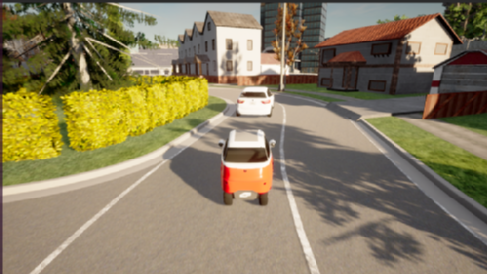
CATARC-ADC is China’s principal research and technical organisation for the automotive industry, and is at the cutting edge of the country’s innovation and regulation for connected and autonomous vehicles (CAV). Meanwhile, CATARC-ADC actively participates in ISO, ASAM and UNECE and other international organizations, with international influence.
This significant new major collaboration, launched today (9 September 2021), means that Safety Pool™ Scenario Databases will enable road simulations including use cases from China, broadening the scope of this global safety platform – thus supporting the growing CAV industry, informing emerging regulatory policies, and enhancing the safety of millions more drivers across China and beyond.
Dr Siddartha Khastgir, Head of Verification & Validation, Intelligent Vehicles at WMG, University of Warwick, said:
“Safety of Autonomous Vehicles needs to be a collaborative mission. No one organisation or country can achieve this mission on their own. With this in mind we created Safety PoolTM Scenario Database to enable global collaboration on scenario sharing.
We are delighted that CATARC-ADC have joined Safety PoolTM Scenario Database which reinforces our mission of international collaboration on CAV safety. With a diverse set of scenarios, the database caters to a large number of autonomous vehicle applications, many of which will be relevant for our stakeholders in China.”
 Nicola Croce, Technical Program Manager, Deepen AI, said:
Nicola Croce, Technical Program Manager, Deepen AI, said:
“Safety Pool™ has all the ingredients to be the reference platform and initiative for AV safety assurance worldwide. What's very unique about it is its global scope, the incentive-based mechanisms engineered to attract and provide value to every different industry stakeholder, and the deep engagement with regulators, everything based on a common foundation of data sharing.
We are excited to welcome CATARC-ADC to the Safety Pool initiative. CATARC-ADC is the major player in scenario-based testing and scenario databases in China. CATARC-ADC’s entry into Safety Pool™ provides a key stepping stone in international collaborations in the scenario-based testing landscape of AVs, and a major leap forward to help companies improve their adaptability in China-oriented testing for ADS.”
Since the launch of this pioneering project in March 2021, WMG at the University of Warwick and Deepen AI have collaborated with stakeholders around the world: to date, over 200 organisations have enrolled in the Safety PoolTM Scenario Database
Bolin Zhou, Global Business General Manager, CATARC – ADC said:
“As a founding member of Safety PoolTM Scenario Database in China and the leading third-party company for ADS validation in China, Automotive Data of China will use the great opportunity of Safety PoolTM Scenario Database to tackle the global autonomous vehicle safety issues with its own strength. Safety PoolTM Scenario Database is a crucial, open platform that aligns well with ADC positioning in China and around the world. Through Safety PoolTM Scenario Database, a global safety tool, China will continue to provide data and tool services for automated driving system validation”
Tim Dawkins, Global Impact Strategy Lead, World Economic Forum said:
“Initiatives like Safety Pool are key to making safe autonomous vehicles a reality – we should not be making safety a competitive advantage. This shared scenario library will allow developers to learn from one another’s datasets to increase the robustness of their systems through exposure to a diverse scenario set. CATARC’s support for Safety Pool represents a vital commitment to a level playing field for the development of autonomous vehicles in the name of safety”
Richard Morris, Innovation Lead - Autonomous & Connected Vehicles, Innovate UK said:
“Innovate UK is glad to have supported the creation and the development of the Safety PoolTM Scenario Database. We would also like to encourage more organisations and countries to contribute scenario content. Scenarios kept in private siloes will not help the mass acceptance of vehicle automation. We all need to share safety knowledge and make best practice widely available. The more comprehensive the Safety PoolTM Scenario Database becomes, the more useful it is for any developer wanting to deploy CAVs anywhere around the world.”
The database provides a diverse set of scenarios in different operational design domains (ODDs i.e. operating conditions) that can be leveraged by governments, industry and academia alike to test and benchmark Automated Driving Systems (ADSs) and use insights to inform policy and regulatory guidelines.
The scenarios have been generated using a novel hybrid methodology developed by WMG, at the University of Warwick, using both knowledge-based and data-based approaches. The Safety Pool™ Scenario Database allows organisations to create scenarios in their own libraries, collaborate with other organisations via both shared and public libraries and enable the public to submit challenging real-world scenarios.
Enabling scenarios to be matched to specific environments and operating conditions means that trials and tests can be undertaken in the simulated environment, controlled test facilities and on public roads, with evidence from each environment being used to inform our understanding of safe behaviours, bringing Autonomous Vehicles closer to market at pace.
It has been suggested that in order for CAV to be safe for the average driver, they will need to be tested on 11 billion miles of road – an insurmountable goal in the physical world. The Safety Pool™ scenario based virtual simulations not only offer the necessary quantity of testing, but also the complexity and quality of countless ‘real-world’ road scenarios.
The development of the Safety Pool™ Scenario Database was funded by UK’s Centre for Connected & Autonomous Vehicles (CCAV), Innovate UK and Zenzic funded Midlands Future Mobility project led by WMG, University of Warwick.
Prof. Lord Bhattacharyya building named one of the UK’s best new buildings in RIBA 2021 National Awards
The Royal Institute of British Architects (RIBA) has today (Thursday 9 September) announced the 54 winners of the 2021 RIBA National Awards for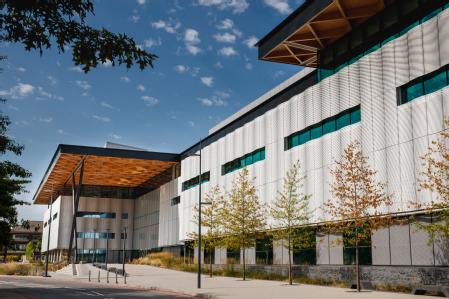 architecture, which includes the Professor Lord Bhattacharyya building, home to NAIC (National Automotive Innovation Centre) at WMG, University of Warwick.
architecture, which includes the Professor Lord Bhattacharyya building, home to NAIC (National Automotive Innovation Centre) at WMG, University of Warwick.
The awards, which have been presented since 1966, recognise the UK’s best new buildings and provide an insight into the UK’s design and economic trends. This year’s projects showcase the extraordinary breadth and brilliance of UK architecture today.
The Prof. Lord Bhattacharyya building, home to NAIC, has scooped up the National Royal Institute of British Architects award.
The NAIC is a partnership between WMG, University of Warwick, Jaguar Land Rover, and Tata Motors, and is the largest of its kind in Europe and is well timed, arriving when a global mobility revolution is underway, with a new age for transport mobility.
A beacon for automotive research it brings together the brightest minds from industry and academia, to develop future vehicles and mobility solutions. It is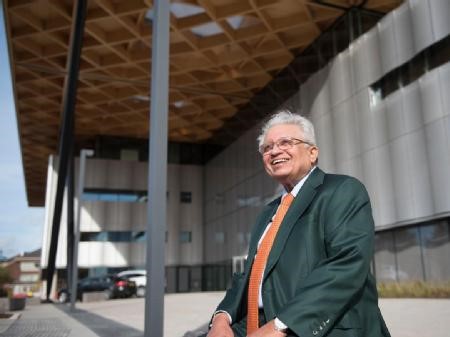 home to up to 1,000 staff working across design, engineering and research, as well as future engineers on degree programmes.
home to up to 1,000 staff working across design, engineering and research, as well as future engineers on degree programmes.
Designed by Cullinan Studios the brief for the Centre was for simplicity and strength of purpose, turning a complex assembly of spaces into an immediately legible building.
The NAIC is a £150m investment between WMG, Jaguar Land Rover, and Tata Motors with £29.5m funding from the UK government’s UK Research Partnership Investment Fund through Research England, which includes the development of an Advanced Propulsion Research Laboratory.
Margot James, Executive Chair of WMG, University of Warwick comments:
“I’m thrilled that the Prof. Lord Bhattacharyya Building has been recognised in this way, to win a National RIBA award is a great tribute to the late Professor Lord Bhattacharyya’s vision. My warmest congratulations to Cullinan Studios who worked with our team to design a building that will inspire designers, engineers and academics to develop the next generation of transport. The Midlands is the centre of automotive in the UK, and the National Automotive Innovation Centre will be the driving force behind future innovation in mobility here in the Midlands.”
James Breckon, Director of Estates, at the University of Warwick, comments:
“It is great to see this new building being recognised and is testament to the wealth of architectural and engineering talent that was brought together to deliver this exemplary sustainable building. It brilliantly draws Industry and Academia together providing an inspirational environment to innovative within. As a landmark building it has transformed the campus at the University of Warwick and is a fitting legacy to the late Prof Lord Bhattacharyya.”
Speaking today, RIBA President Simon Allford said:
“Ranging from radical, cutting-edge new designs to clever, creative restorations that breathe new life into historic buildings, these projects illustrate the enduring importance and impact of British architecture.
“There are a good number of well-designed school and university buildings that are powerful investments in the future, and I am sure they will inspire young people, their teachers and communities. I am also thrilled to see many of these make creative use of existing structures. Well-designed education facilities should be the rule rather than the exception – every child deserves an effective learning environment, and these projects provide rich inspiration.
“Looking ahead, as we design the low carbon future, we must start by exploring the retention and reuse of existing buildings. And when a new building is essential, we need to make sure it will last and serve the future well – so it needs to be flexible and reusable. Long life; loose fit; low energy architecture is the present and the future. It is therefore very encouraging to see restoration and sensitive adaptation feature so prominently this year; with many buildings acknowledging their history, the needs of the present and the potential of their dynamic future.”
ENDS
9 SEPTEMBER 2021
NOTES TO EDITORS:
High-res images available at:
https://warwick.ac.uk/services/communications/medialibrary/images/october_2020/national_automotive_innovation_centre_university_of_warwick_-_photo_credit_nick_dimbleby_3.jpg
Caption: Exterior Shot of the Professor Lord Bhattacharyya Building at WMG, University of Warwick
Credit: Nick Dimbleby/WMG, University of Warwick
https://warwick.ac.uk/services/communications/medialibrary/images/junes_2021/inside_naic.jpg
Caption: Interior shot of the Professor Lord Bhattacharyya Building at WMG, University of Warwick
Credit: WMG, University of Warwick
https://warwick.ac.uk/services/communications/medialibrary/images/july_2021/professor_lord_bhattacharyya_sitting_outside_the_prof._lord_bhattcharyya_building.jpg
Caption: The Late Professor Lord Bhattacharyya with his building at WMG, University of Warwick
Credit: WMG, University of Warwick
For further information please contact:
Alice Scott
Media Relations Manager – Science
University of Warwick
Tel: +44 (0) 7920 531 221
E-mail: alice.j.scott@warwick.ac.uk
UK’s first live micromobility event takes place at WMG, University of Warwick
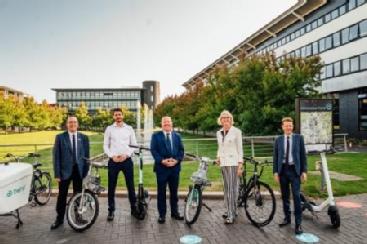 Micromobility refers to small lightweight efficient vehicles, which can be used to make short distance journeys.
Micromobility refers to small lightweight efficient vehicles, which can be used to make short distance journeys.
Types of micromobility vehicles we could see in our communities include bikes, hover boards, e-bikes and e-scooters. They can be used to save time, avoid congestion, remove parking conundrums and most importantly they use much less energy than a car, therefore contributing towards the Government’s zero-carbon goals.
The future of micromobility is incredibly topical, and to bring together all aspects of it WMG, at the University of Warwick, hosted the UK’s first live micromobility event, bringing together manufacturers in the micromobility sector, regional transport authorities; city councils and local authorities; Government agencies; research organisations and more.
The event not only saw the demonstration of many new exciting and existing micromobility vehicles from e-scooters to e-cargo bikes, but also outlined the opportunities for the UK to lead this sector in battery development and recycling, human factors and behavioural change, materials development and more.
It was also an opportunity to address the challenges the sector faces particularly around lack of infrastructure, policy and regulation.
Programme Director John Fox, from WMG, University of Warwick comments:
“Despite progress on electrification, transport emissions are actually increasing; Micromobility is essential if we are to achieve net zero emissions from this sector. With around 70% of journeys in the UK under 5 miles, Micromobility vehicles can have a huge impact on our emissions. They use typically 5% of the energy of an Electric vehicle to make trips, and their manufacture is also significantly less carbon-intensive.
“There are many other benefits Micromobility offers too, including air quality improvements, greater footfall in highstreets, and taking up much less space than a car to move the same number of people which releases more space in urban areas for other things.
“The conference touched on many of the key issues, including how to make Micromobility safe, accessible, integrated and attractive to new users, and highlighted the need for coordination between government, local authorities and industry. WMG announced our ‘UK Micromobility roadmap” to support this coordination, being developed with Cenex and being progressed through consultation and workshops sessions over the next six months, so watch this space!”
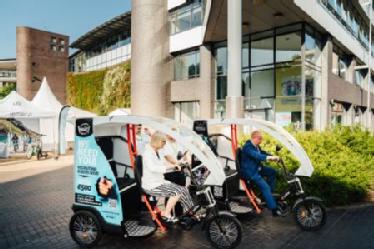 Margot James, Executive Chair of WMG, University of Warwick adds:
Margot James, Executive Chair of WMG, University of Warwick adds:
“As a leader in the electrification of transport, WMG, University of Warwick, is at the forefront in the development of high-quality, safe Micromobility vehicles. We are conducting trials with vehicle and infrastructure manufacturers on the Warwick campus, and supporting testing and development of new vehicles and systems in our labs. We’re also working closely with our local and regional authorities to make travel to and from our campus more sustainable, which includes supporting commutes by Micromobility with improved infrastructure and facilities on arrival.”
Andy Street, the Mayor of the West Midlands, said:
“As the home of the green industrial revolution, micromobility has a key role to play in the West Midlands as we look to tackle air pollution to help us reach our #WM2041 climate goal. Earlier this year we launched West Midlands Cycle Hire across eight towns and city centre - with more than 100,000 journeys taken on the bikes in just a few months – and we are also trialling e-scooters across the region, with more than 550,000 trips taken in Birmingham alone over the past year.
“But despite this successful start of both schemes we are of course always open to more innovation and improvement. That’s why it has been brilliant to have the micromobility industry here in the West Midlands, and it has been eye-opening to see what the industry has to offer.”
Councillor Jim O’Boyle, cabinet member for jobs, regeneration and climate change said:
“The innovation shown at the event is a result of the incredible engineering and manufacturing talent that can only be found in Coventry. Our city is leading the green industrial revolution and is at the heart of developing new forms of transport, from the micromobility solutions we have seen at the event to the innovative Coventry Very Light Rail, set to transform how many of us travel.
“It’s great to be with our partners at WMG to raise awareness of the ground-breaking work our city is contributing to the future of clean, green transport.”
ENDS
8 SEPTEMBER 2021
NOTES TO EDITORS
High-res images available at:
https://warwick.ac.uk/services/communications/medialibrary/images/july_2021/070921wuweb-12.jpg
Caption: A WMCA bike stand
Credit: WMG, University of Warwick
https://warwick.ac.uk/services/communications/medialibrary/images/july_2021/070921wuweb-247.jpg
Caption: People trialling some micromobility vehicles at the event
Credit: WMG, University of Warwick
https://warwick.ac.uk/services/communications/medialibrary/images/july_2021/070921wuweb-53.jpg
Caption: From left to right: Professor Robin Clark, Dean of WMG at the University of Warwick, John Fox – Programme Director for Micromobility at WMG, Cllr Jim O’Boyle - cabinet member for jobs, regeneration and climate change at Coventry City Council, Margot James- Executive Chair of WMG at the University of Warwick, Mayor of the West Midlands Andy Street
Credit: WMG, University of Warwick
https://warwick.ac.uk/services/communications/medialibrary/images/july_2021/070921wuweb-65.jpg
Caption: Margot James- Executive Chair of WMG at the University of Warwick with Mayor of the West Midlands Andy Street
Credit: WMG, University of Warwick
https://warwick.ac.uk/services/communications/medialibrary/images/july_2021/070921wuweb-62.jpg
Caption: From left to right: Cllr Jim O’Boyle - cabinet member for jobs, regeneration and climate change at Coventry City Council, Margot James- Executive Chair of WMG at the University of Warwick and Andy Street - Mayor of the West Midlands
Credit: WMG, University of Warwick
https://warwick.ac.uk/services/communications/medialibrary/images/july_2021/070921wuweb-69.jpg
Caption: Mayor Andy Street with some of the micromobility vehicles showcased
Credit: WMG, University of Warwick
https://warwick.ac.uk/services/communications/medialibrary/images/july_2021/070921wuweb-43.jpg
Caption: Margot James – Executive Chair of WMG, and Cllr Jim O’Boyle from Coventry City Council have a go in a Hail bike
Credit: WMG, University of Warwick
https://warwick.ac.uk/services/communications/medialibrary/images/july_2021/070921wuweb-50.jpg
Caption: Margot James – Executive Chair of WMG at the University of Warwick on a Hail bike
Credit: WMG, University of Warwick
https://warwick.ac.uk/services/communications/medialibrary/images/july_2021/070921wuweb-222.jpg
Caption: People at a West Midlands Transport Hub with a West Midlands Cycle Hire bike and a VOI e-scooter
Credit: WMG, University of Warwick
https://warwick.ac.uk/services/communications/medialibrary/images/july_2021/070921wuweb-72.jpg
Caption: A West Midlands Cycle Hire bike
Credit: WMG, University of Warwick
For further information please contact:
Alice Scott
Media Relations Manager – Science
University of Warwick
Tel: +44 (0) 7920 531 221
E-mail: alice.j.scott@warwick.ac.uk
WMG alum awarded Best Project Certificate by IMechE
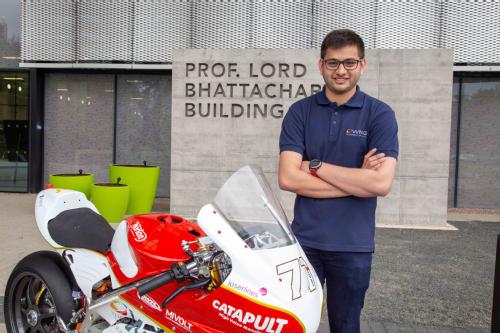
We’re extremely proud to congratulate our WMG alum Aman Surana on his Institution of Mechanical Engineers Certificate for the ‘Best Project’. Aman received this prestigious award as a recognition of his extensive contribution to project work throughout his course. The certificate is awarded each academic year on the recommendation of a university Head of Department for academic achievement.
Aman comments “I'm glad to have the extensive hours put in the project recognised and am thankful to all my team members who deserve this award equally for helping us achieve the various targets throughout the year. A big thanks to all the project supervisors I've had over the years, for passing on their years of knowledge and experience; while also constantly motivating and pushing me to strive for success.”
Aman is fondly remembered at WMG for leading the Warwick Moto project as Chief Engineer. Warwick Moto is the University's newest student-led project which aims to design, build and race the University's first fully-electric race-spec superbike.
Conceptualised in March 2019 by a group of ambitious and passionate engineering students; the team’s goal was to take a vehicle from design-to-track in 15 months. The project was started to not only fuel the enthusiasm of the founding team but to also provide an opportunity for students from across the University to expand their knowledge and understanding of an industrial project, with deliverables and tight deadlines.
During his time with WMG, Aman was tasked with describing himself in three words. “Married to work” was his response, a mantra he’s clearly remaining loyal to, and it’s paying dividends. Congratulations Aman!
Eatron and WMG win funding for project COBRA
A new partnership between Eatron Technologies and WMG has been formed for the COBRA (Cloud/Onboard Battery Remaining useful life Algorithm) project, thanks to the funding from the Faraday Battery Challenge.
The COBRA project will create new algorithms which will estimate the Remaining Useful Life (RUL) in an Electric Vehicle (EV) battery, and could contribute to the UK becoming a supplier of the most advanced Battery Management Systems (BMS) in the world.
The innovation of project COBRA comes from combining advanced battery ageing models developed by WMG with Eatron Technologies' own machine-learning-based approach to Remaining Useful Life (RUL) estimation from existing internal R&D work.
The technology has been refined to a level of usability, reliability, and maturity that gives battery manufacturers and integrators the confidence required to enable mass adoption.
Undertaken by a team of highly experienced engineers with a track record of delivering state-of-the-art software and system solutions for electrification projects with the automotive sector, project COBRA will:
· Develop a unified physics and machine-learning-based approach for battery RUL estimation with high accuracy of over 90%.
· Integrate a developed solution in automotive-grade BMS hardware.
· Integrate a solution into cloud-based platforms for fleet operation services.
The funding from the Faraday Battery Challenge enables lead partner Eatron Technologies to put the UK on the map as a global leader in the design, development, and manufacture of batteries for electric vehicles. The COBRA project offers the opportunity to be first-to-market with an accurate RUL algorithm that can be implemented in a real-world BMS.
As part of project COBRA, Eatron Technologies is currently developing and integrating advanced battery diagnostics algorithms for its next generation of BMS and cloud-based battery analytics; it's expected that these will deliver significantly higher value both to battery manufacturers and integrators as well as electric vehicle Original Equipment Manufacturers (OEMs), UPS suppliers, and other providers of off-highway applications.
In terms of the usefulness of these technologies, the possibilities offered by project include: predicting the RUL of a lithium battery under real-world operating conditions, COBRA technology will work with both off-board fleet data analysis and on board vehicle data while integrating with the BMS and guide battery manufacturers and their cell suppliers.
All of this can be used to track and assess the real-life fleet performance of batteries during product validation and post-production phases. In wider terms, successful adoption of these new BMS features would ultimately also increase the value of the EVs and their uptake on UK roads`
As well as extending a batteries' first life by giving an accurate indication of a battery's remaining life, COBRA will also improve second-life applications by reducing the need for expensive testing, as well as increase the effective power of batteries by allowing the safe utilisation of a wider operating window.
Dr Dhammika Widanalage from WMG, University of Warwick comments:
“We are delighted to work with Eatron technologies on the COBRA project, and look forward to using our novel battery ageing technology to test out their algorithms in their battery management system.
“If their algorithms means consumers can get more out of their EV battery, then it’s possible more people may be inclined to buy one, therefore helping the UK pave the way to a cleaner greener zero-carbon future.”
After months of discussion with interested customers around the world, intelligent software provider Eatron Technologies found there exists a strong demand for the features that the COBRA project can offer in batteries for EVs. COBRA could contribute to the UK becoming a supplier of the most advanced Battery Management Systems (BMS) in the world, as well as contributing to an increased uptake of EVs which in turn will help nations around the globe to reach environmental targets over the coming decades.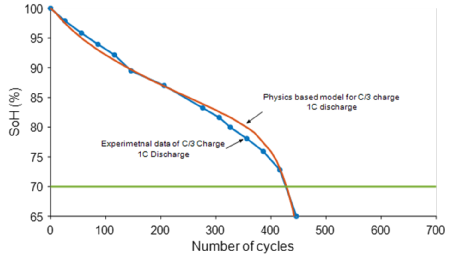
"This funding has brought the project forward by 12 months, and there is huge demand from potential customers," said Dr Umut Genc, Managing Director, Eatron Technologies. "With the funding, we've been able to immediately hire additional software engineers as well as tapping into cutting-edge battery research from the team at WMG. Ultimately, grant funding this project de-risks the activities required to achieve feasibility of this highly innovative approach to RUL estimation.
Tony Harper, Challenge Director for Faraday Battery Challenge at UK Research and Innovation, said:
“Since 2017 the Faraday Battery Challenge has been supporting the UK’s battery companies to produce batteries that are more cost effective, more efficient, charge faster and can easily be recycled. This new round of funding has enabled us to support companies, like Eatron Technologies, across the battery supply chain and build on the UK’s world class research and innovation.”
EVs on UK roads are set to see rapid growth, with 1.8 million expected to be sold in 2030, or 64% of total car sales, according to the Faraday Institution. The accompanying acceleration in battery manufacturing will drive a substantial increase in second-life applications, while the supply for stationary applications could excess 200 gigawatt-hours per year by 2030.
This rapid adoption of EVs around the world will increase global demand for BMSs over the coming years. Eatron Technologies is proud to be seen as a forerunner in BMS technology by the Faraday Institute and hopes that project COBRA plays an important role in the global fight for the environment by making EVs more practical for fleet operators and drivers around the world.
UK’s most outstanding university/industry collaborations shortlisted for Bhattacharyya Award
The Royal Academy of Engineering and WMG, at the University of Warwick, have shortlisted 11 exceptional collaborations for the inaugural Bhattacharyya Award. With a cash prize of £25,000, the Bhattacharyya Award will be presented to the team who best demonstrate how industry and universities can work together. Winners will be announced on 16 September 2021.
The Bhattacharyya Award is funded by the Department for Business, Energy and Industrial Strategy and was announced in July 2019 as a tribute to Professor Lord Kumar Bhattacharyya KT CBE FREng FRS, the Regius Professor of Manufacturing at the University of Warwick and founder of WMG.
Starting his career as a graduate apprentice at Lucas Industries, Professor Lord Bhattacharyya became Britain's first ever Professor of Manufacturing. Having seen first-hand how slowly academic advances were translated into real business and social change, he founded WMG in 1980 to help business innovate and help university researchers change our lives. Academic excellence with industrial relevance has always been at the heart of WMG, and today, it is one of the world’s top applied research centres, with a reputation for academic excellence and business results spanning the globe.
The shortlist features collaborations that address some of the most pressing national and global challenges, from cybersecurity and medical simulation to powering the aircraft of the future.
The full shortlist is as follows:
- Imperial College London and Shell
- Loughborough University and Rolls Royce
- Queen's University Belfast and the Centre for Secure Information Technologies
- Swansea University and the Steel Strategic Alliance
- The University of Manchester and BP
- University of Bath and the Institute for Advanced Automotive Propulsion Systems
- University of Cambridge and the Cambridge Centre for Smart Infrastructure and Construction
- University of Leeds and Simulation Solutions Ltd
- University of Sheffield and Siemens
- University of Surrey and the 5G Innovation Centre
- University of York and the High Integrity Systems Engineering group
Science Minister Amanda Solloway said: "We are extremely proud to be funding the Bhattacharyya Award, which encourages collaboration between our fantastic universities and businesses. By working hand-in-hand, academic advances can be quickly translated to industry, bringing forward game-changing innovations and helping us to build back better from the pandemic."
Professor Dame Ann Dowling OM DBE FREng FRS, immediate past-President of the Royal Academy of Engineering, is chair of the judging panel for the Bhattacharyya Award. She said: “Lord Bhattacharyya was a strong advocate of an effective industrial strategy, seeking a revitalisation of skills policy, a growth in apprenticeships, a focus on the impact of research and training and technology partnerships between industry and universities. We received some fantastic entries that showcase best practice in developing effective collaborations between universities and industry – we hope that these will inspire productive new partnerships in the future.”
Margot James, Executive Chair at WMG, University of Warwick said “The Bhattacharyya Award amplifies the approach Professor Lord Bhattacharyya took in transforming how universities research and educate to meet the needs of industry and society. Supporting genuine collaboration to create relevant and impactful research and enabling education programmes that nurture the brightest talent. The shortlist exemplifies the very best of university/ industry collaboration. We look forward to seeing which collaboration is selected as the overall winner.”
The winner of the Bhattacharyya Award will be announced on Thursday 16 September 2021. Those wishing to attend can register via the Academy’s website here.
